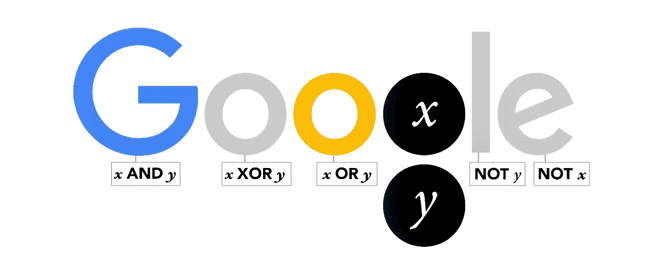Monday, 2 November 2015
Today’s Google’s doodle is about one great mathematician and one of the greatest contributors to the foundation of what today we call a computer: George Boole.
In fact, Modern Computing and Modern Electronics started to be built a long time after ‘The Laws of Thinking’ - Boole’s main work - , like a century after. Would Boole think that his work would be so important?! So important that every little action in a computer follows the Boolean Logic. That’s right! It was named after him.
The boolean value is fundamental for programming languages. This boolean value will tell if something is true or false, so the computer can perform actions based on these commands Additionally, there are some combinations with true and false which are very largely used, the ones that Google’s Doodle is representing. First take a look and the second G in the Doodle; it represents x and y. When the variable is showing its value it is true, otherwise is false, let’s go to the combinations:

- AND: for an ‘AND’ to produce a true value, both variables must be true. In our case, x and y must be true so the first G will be colored, otherwise ‘AND’ will produce a false value.
- XOR: for a ‘XOR’ to produce a true value, only one of the variables must be true. In our case, x must be true or y must be true, not both. So the first O will be colored, otherwise ‘XOR’ will produce a false value. X stands for exclusive.
- OR: for an ‘OR’ to produce a true value, at least one of the variables must be true. In our case, x or y must be true, or both, so the second O will be colored, otherwise ‘OR’ will produce a false value.
- NOT: differently of ‘AND’, ‘OR’ and ‘XOR’ that are binary, ‘NOT’ is an unary operation. For a ‘NOT’ to produce a true value, the variable must be false, because it is negating its own value. If the variable is true, ‘NOT’ will produce a false value. In our case, y must be false so the L will be colored, and x must be false so the E will be colored.
Here we used only two variables, but those operations can be use with as much as variables you want, like: x AND y AND z AND a…
So, because of this important contribution, Google honors the 200th George Boole’s birthday.
Well done, Google!
